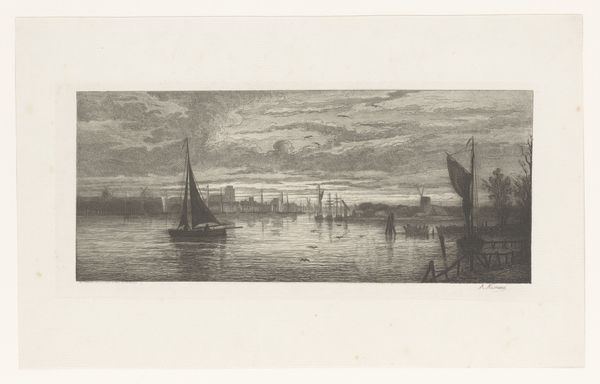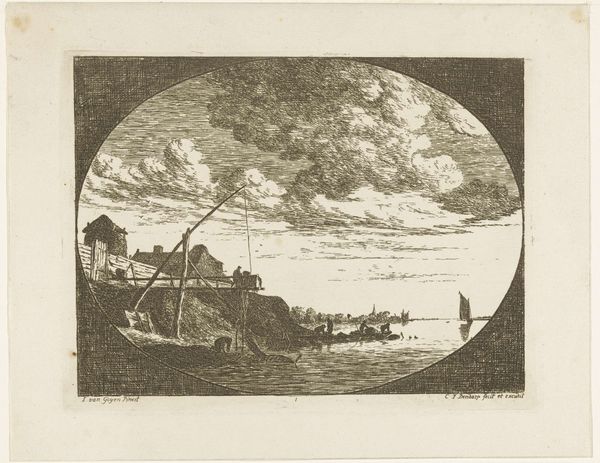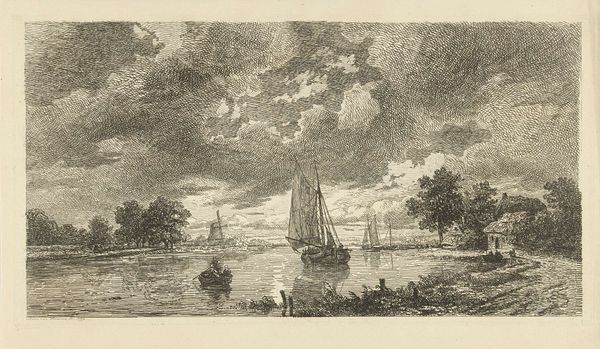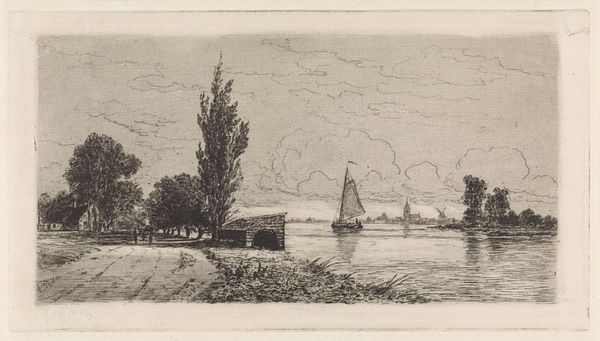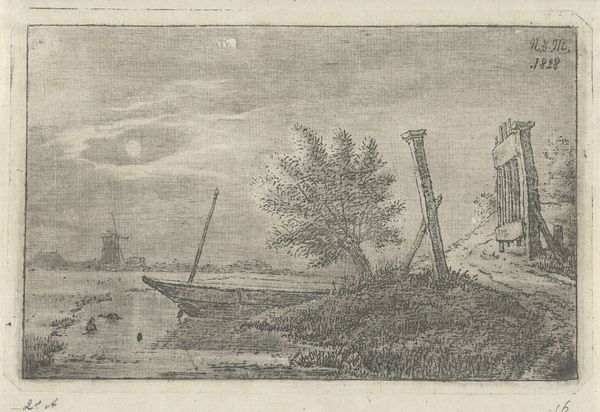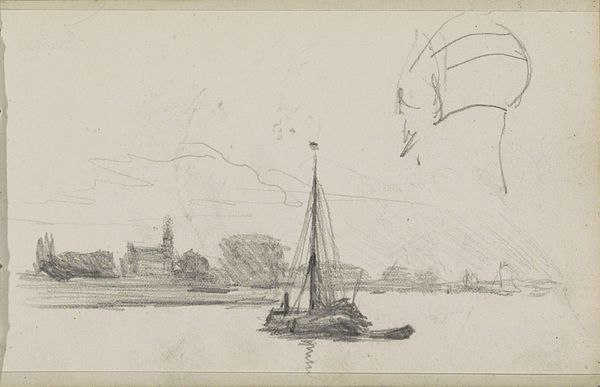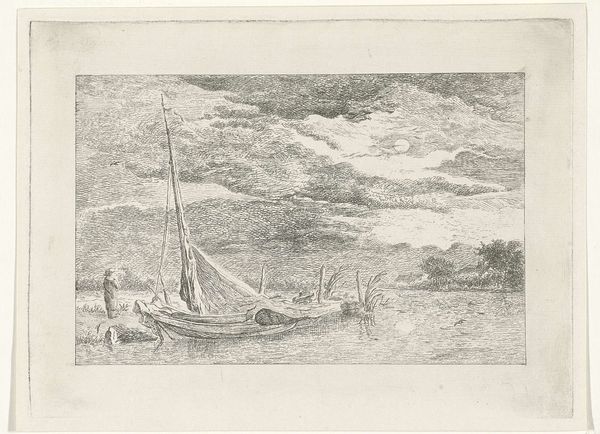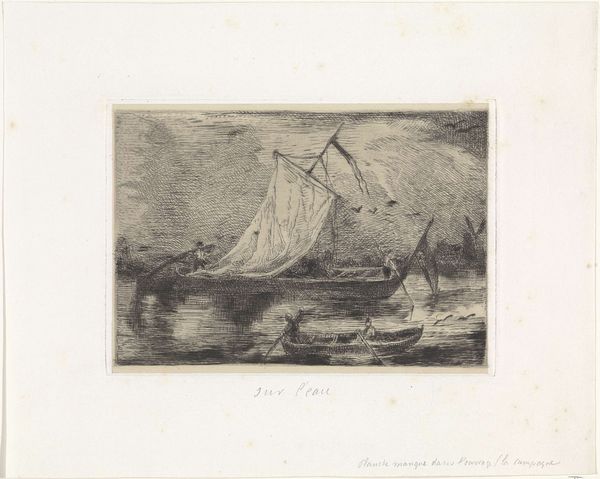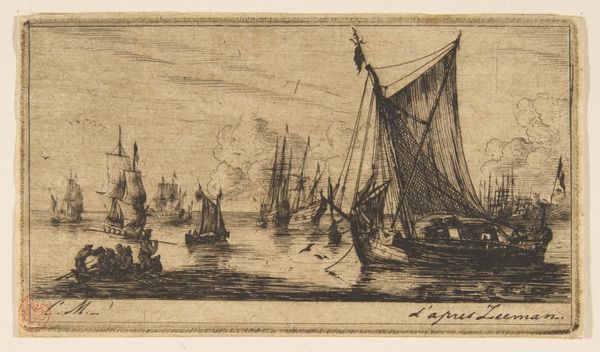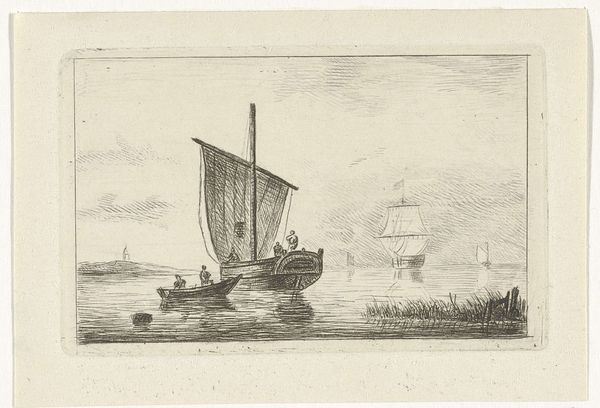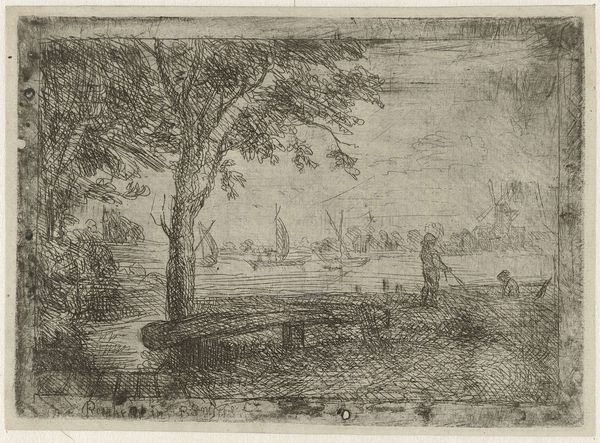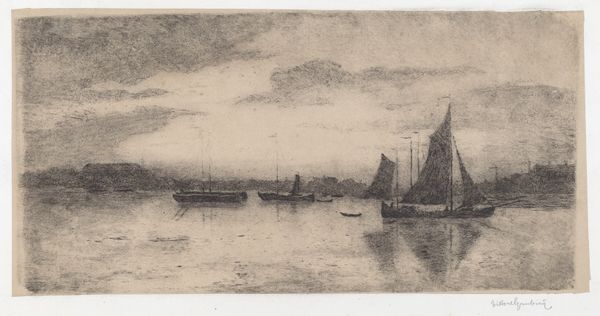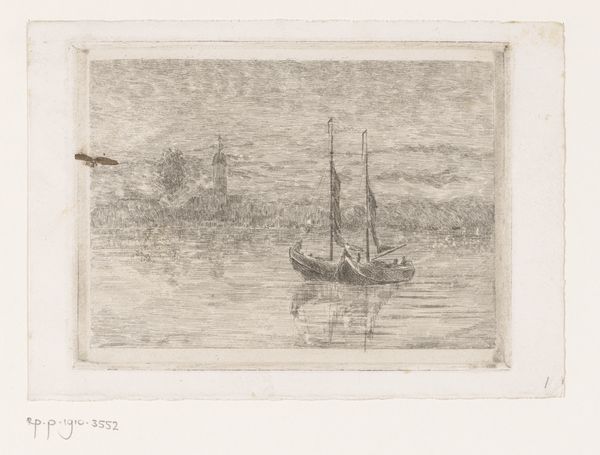
Dimensions: height 56 mm, width 83 mm
Copyright: Rijks Museum: Open Domain
Curator: Ah, I find this print utterly enchanting. "River View by Full Moon," dating back to 1765 by Caspar Jacobsz Philips. There's such a quiet dreaminess to it, wouldn't you agree? Editor: Immediately, I'm drawn to the texture. All those intricate, etched lines, creating form and light. You can almost feel the labor and technique poured into its making. Curator: Absolutely. It’s as if the artist whispered onto the plate with his etching needle. And the moon... like a pearl illuminating this miniature drama, don't you think? Editor: Miniature is the key word. It’s modest scale belies its grand scene. I start thinking about printmaking and accessibility: who was Philips trying to reach? This work suggests a market hungry for picturesque views, packaged and distributed with relative ease. Curator: I’ve always thought that moonlight introduces the sublime. It makes you ask what's really being seen. You think Philips sought to awaken that sense of wonder about the Dutch landscape? Editor: I do, and the controlled lines help create a calm but convincing scene, perfect for home decor and contemplation. Also consider that the print itself—the paper, the ink, the tools used—reflects the resources and industries that supported art production at the time. Were the materials local? Imported? Curator: A tantalizing mystery. Knowing Philips, the drama and light probably played a major role in selecting what he used. Look at how he layers shadows to pull figures out, for instance those tiny characters boating past, cloaked in penumbra. Editor: Sure, aesthetics count! But consider the printmaking guilds, apprenticeships, and economic systems tied to creating prints like these. What choices were available to him when choosing ink? Or acid? Even an aesthetic selection of materials like these echoes labor. Curator: Material or ethereal, Philips invites us to see moonlight on water with fresh eyes. It is more than just ink and etching. It is magic. Editor: Magic perhaps wrought from skill and industrial capacity... Regardless, it offers a fascinating window into 18th-century aesthetics and economies.
Comments
No comments
Be the first to comment and join the conversation on the ultimate creative platform.
